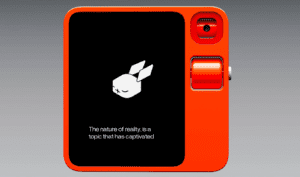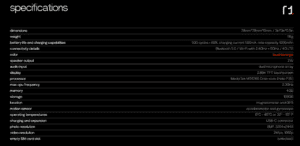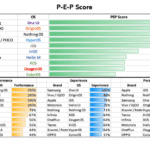Among all the CES 2024 technology showcase, the rabbit R1 looks a promising addition from both utility and price perspectives.

‘Luxurious’ innovations
There is nothing exciting in 2024 to know that the device is powered by AI, or it is capable of AI. Yes, on-device AI for smartphones is going to be exciting, and I am looking forward to Samsung’s S24, which is going to be the first truly AI smartphone. Otherwise, seeing an AI implementation across devices isn’t something to be wow about.
The CES 2024 always has many exciting and cool stuff to show for a tech enthusiast like me as well as for the general folks having interest in technology. It also amuses people about the possibilities of technology. It gives a peep into how we are going to acquire a technology powered lifestyle over next 3-5 years. Yes, its also a fact that not technologies showcased at CES, or for that matter other events, do not become a success.
The fundamental issue I have with most of the things showcased this CES is that none of them is a fundamental innovation. There is hardly anything that can go for a mass adoption in next year or so. By the time some of them would become promising enough to go to a mass scale, some new products would come, and we will see this ‘rat-race’ on and on. Almost all the products showcased in CES 2024, are for people to upgrade from the existing version to take the experience to next levels. Some of them would of course change the human-machine interface. Transparent screens, flying cars, foldable displays, and all other AI powered devices showcased are not for first time users. These products are not going to widen the technology base, rather give some good reasons for people to upgrade to the next levels.
Over the past decade or so, the technology world, led by the smartphone industry has resorted to this playbook, where the focus is to add some more elements integrating the latest technologies around, taking the product selling price to the next bracket reducing the market opportunity in terms of volumes as all the existing users won’t upgrade to the next scale, but make a 25-30% growth in revenues. The products showcased in CES 2024 all reflect this business strategy.
Many of these products will start retailing at 2 to 3 times the price of existing alternatives. Majority of these products will be 60-70% costly than the existing reference point from which they would take off. Even if we do the price waterfall analysis of these products, they don’t seem to hit affordability in near future to classify as mass products.
Rabbit r1 is different
But the situation is not that bleak! For me there is one hope, the Rabbit R1. The great thing about this product is that it is solving a big issue and has affordability as the central theme. World across, we are seeing smartphones not able to expand the digital population in any country. The industry is driven by upgrades and replacements. Even in India, we are hit by this roadblock. We have been endeavouring of stopping 2G networks, bringing the featurephone users to a smartphone and widening the digital net, which could mean getting almost everyone access to digital infrastructure and platforms co-created by the government and private institutions. For one or the other reason, we are seeing the threshold prices of various devices going up every year. In India where more than half of the smartphones were sold in less than ear. In India where more than half of the smartphones were sold in less than ₹10,000, today we hardly have a smartphone available with the latest 5G technology. As more smartphone makers will divest out of 4G, many users will be forced to spend more than their capacities to replace their existing smartphones.
The Rabbit R1 (watch keynote) seems to be a promising one which is architecturally designed in a way that is not hardware intensive. This also means that you may not need to add more processor power, storage or RAM in subsequent models which eventually add to the cost. For example, since there are no apps to be used, the storage needs are going to remain minimal. Similarly, the way camera (eye) has been implemented does not require having multiple of them, again adding to the cost, processing, etc.

Rabbit for India
For India, this kind of a personal assistant, which we many may not call exactly a smartphone, but a personal digital smart assistant does solve the use case by allowing almost every function of a smartphone that too with a lot more ease, flattening the learning curve. So, the adoption could be easy. The beauty is that this device starts at $199 and there are no subscriptions, etc., required. It can be powered by any sim, there is no sim locking with any operator forcing a user to buy particular subscriptions of some predefined values adding to the total cost of ownership of the device. In many such ways it’s disruptive as an offering.
This device has all the potential and positioning of effectively making India 2G mukt and getting every mobile user on a digital network. The best way to make it happen would be that the government engages with this company, invite them to make in India and work together to see how this device can be offered at a target price of ₹5,000. I am sure with a potential to capture 200 million users; the economics could be worked out.
The other way is to let it to market forces, and eventually see this device selling in India in less than ₹10,000 where many users may adopt this instead of the present-day smartphones. We may still be able to get around 50 million users using this device to join the digital ecosystem.
Except for the price, which is understandable as the economies are yet to be achieved, the device is India ready in many ways. Firstly, there is no sim lock with any or a few operators. Secondly, the architecture is not hardware intensive, so the subsequent editions are unlikely to increase the cost significantly. Third and most importantly, the device runs on rabbit OS which is already supporting translation in some of the languages used in India including Hindi, Urdu, and Tamil, other than the standard English. I am sure if the device starts catching up in India, we might see some more languages like Bengali, Marathi, Gujarati, etc., also being supported.
In many ways, I see Rabit R1 one of the possible alternatives that we have been looking for to widen our digital base in India and eventually lead to a 2G Mukt nation and taking the benefits and prosperity of digital to every possible India.





